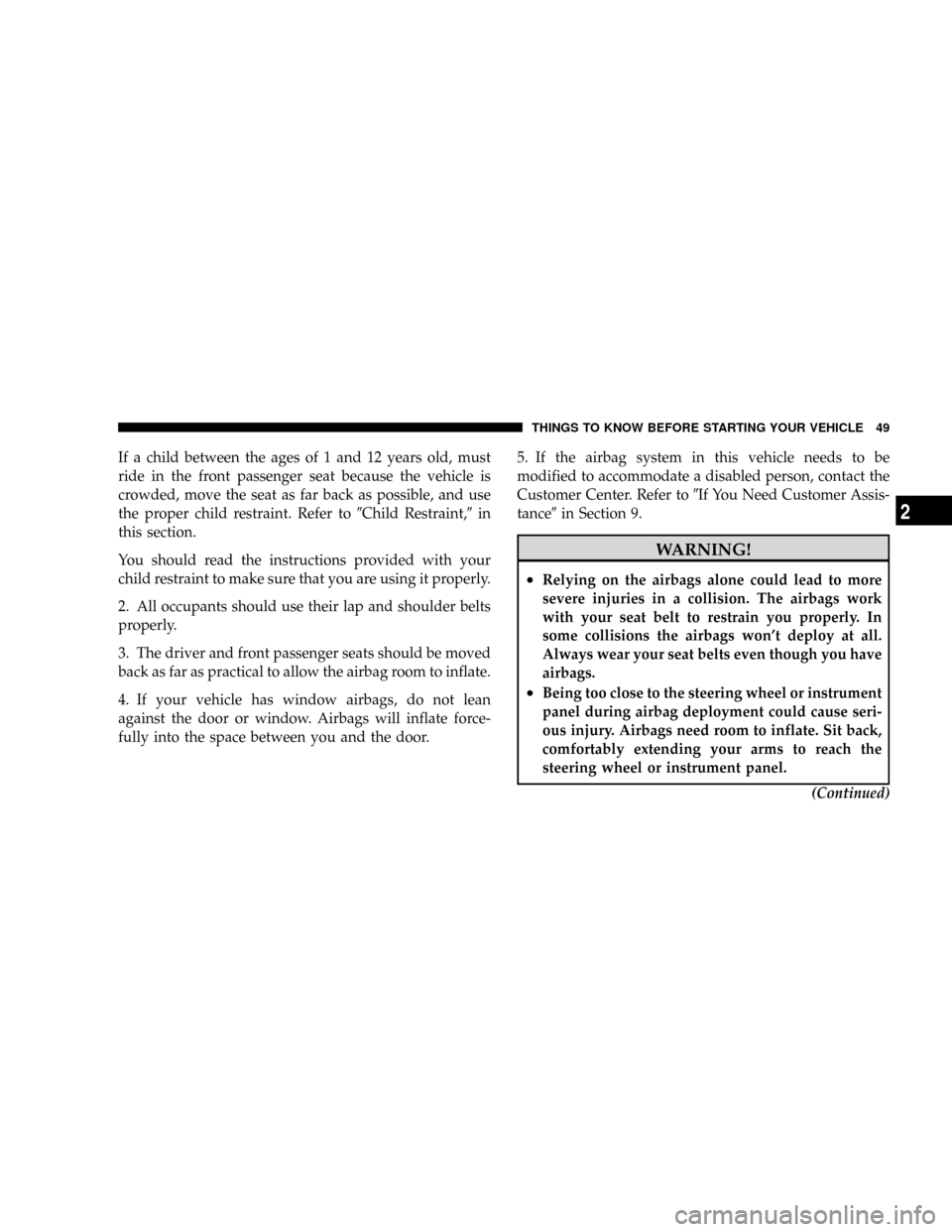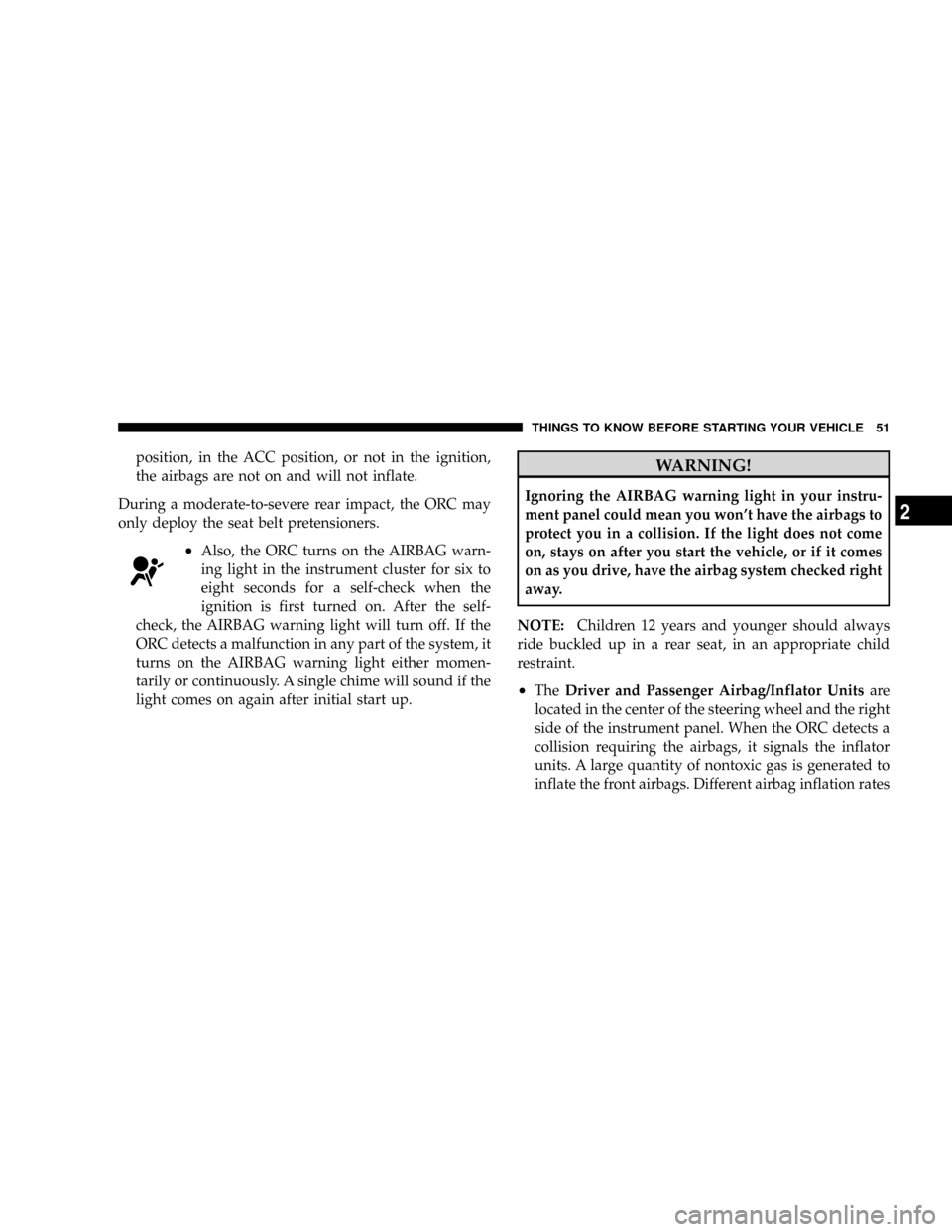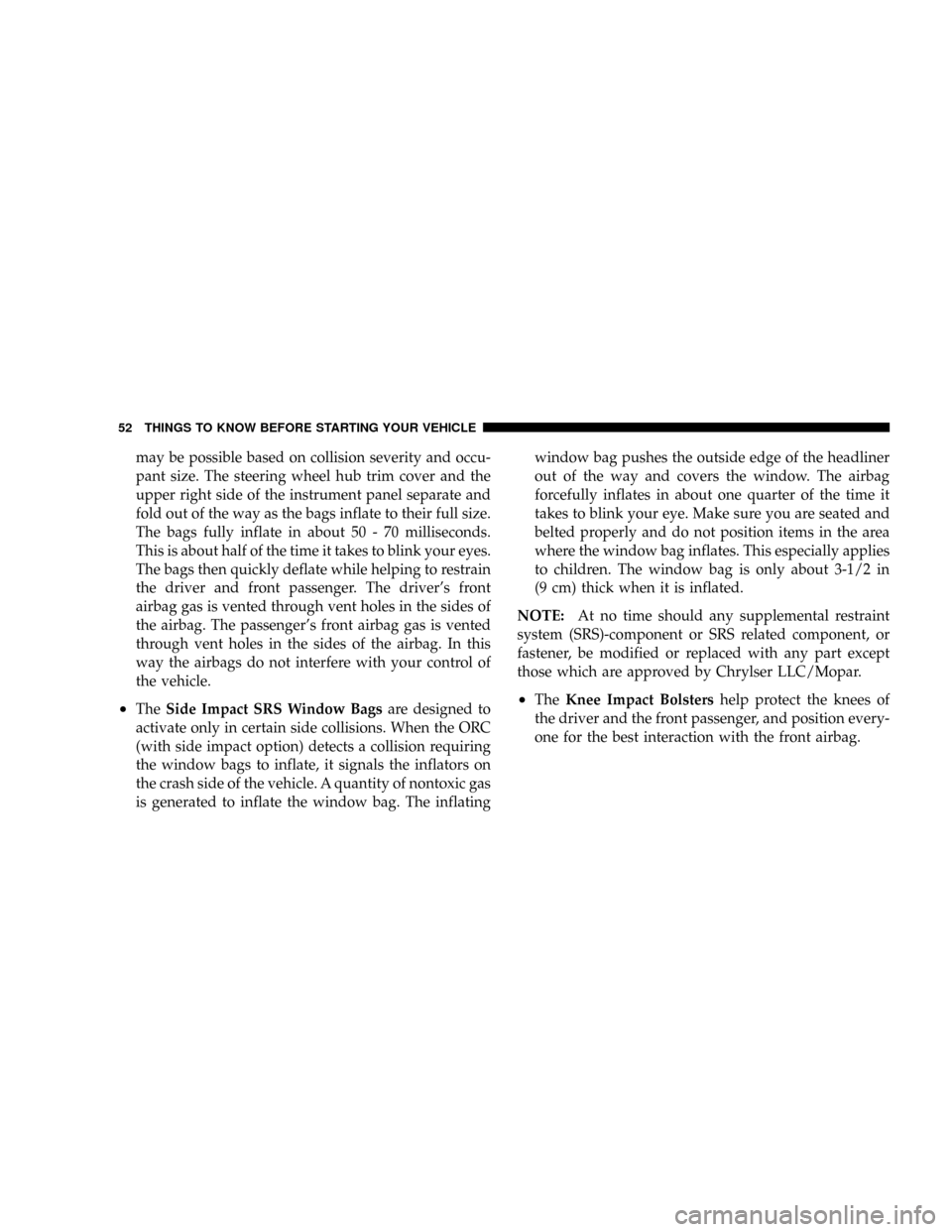Page 11 of 449
THINGS TO KNOW BEFORE STARTING YOUR VEHICLE
CONTENTS
mA Word About Your Keys................. 12
NIgnition Key Removal.................. 12
NLocking Doors With The Key............. 15
mSteering Wheel Lock Ð If Equipped......... 15
NIf You Wish To Manually Lock The Steering
Wheel.............................. 15
NTo Release The Steering Wheel Lock........ 15
NAutomatic Transmission Ignition Interlock
System............................. 15mSentry KeytImmobilizer System Ð If
Equipped............................. 16
NReplacement Keys..................... 17
NCustomer Key Programming............. 17
mVehicle Security Alarm System Ð If Equipped . . 19
NTo Set The Alarm...................... 19
NTo Disarm The System.................. 19
mIlluminated Entry....................... 20
NVehicles Equipped With Power Door Locks . . . 20
2
Page 16 of 449
CAUTION!
An unlocked car is an invitation to thieves. Always
remove the key from the ignition and lock all the
doors when leaving the vehicle unattended.
Manual Transmission Ð If Equipped
When the steering wheel is in the LOCK position, the
steering and ignition systems are locked to provide
antitheft protection for your vehicle. It may be difficult to
turn the key from the LOCK position when starting your
vehicle. Move the steering wheel left and right while
turning the key until it turns easily. To remove the key,
depress and hold the release button located between the
ignition switch and the instrument panel. Turn the igni-
tion key to LOCK and remove the key.
Ignition Release Button
1 Ð ACC 4 Ð ON/RUN
2 Ð LOCK 5 Ð START
3 Ð OFF 14 THINGS TO KNOW BEFORE STARTING YOUR VEHICLE
Page 17 of 449

Locking Doors With The Key
You can insert the key into the door lock cylinder with
either side up. To lock the driver's door, turn the key
rearward. To unlock the driver's door, turn the key
forward. For external door lock lubrication, refer to
ªBody Lubricationº in Section 7.
STEERING WHEEL LOCK Ð IF EQUIPPED
Your vehicle may be equipped with a passive steering
wheel lock. This lock prevents steering the vehicle with-
out the ignition key. If the steering wheel is moved no
more than 1/2 turn in either direction, and the key is not
in the ignition switch, the steering wheel will lock.
If You Wish To Manually Lock The Steering
Wheel:
With the engine running, turn the steering wheel upside
down, turn off the engine and remove the key. Turn the
steering wheel slightly in either direction until the lock
engages.
To Release The Steering Wheel Lock:
Insert the key in the ignition switch and start the engine.
If the key is difficult to turn, move the wheel slightly to
the right or left to disengage the lock.
NOTE:If you turned the wheel to the right to engage
the lock, you must turn the wheel slightly to the right to
disengage it. If you turned the wheel to the left to engage
the lock, turn the wheel slightly to the left to disengage it.
Automatic Transmission Ignition Interlock System
This system prevents the key from being removed unless
the shift lever is in PARK. It also prevents shifting out of
PARK unless the key is in the ACC, or ON position, and
the brake pedal is pressed.
THINGS TO KNOW BEFORE STARTING YOUR VEHICLE 15
2
Page 48 of 449
WARNING!
Using a seat belt extender when not needed can
increase the risk of injury in a collision. Only use the
seat belt extender when the lap belt is not long
enough when it is worn low and snug, and in the
recommended seating positions. Remove and store
the extender when not needed.
Driver And Right Front Passenger Supplemental
Restraint System (SRS) ± Airbags
This vehicle has airbags for both the driver and right
front passenger as a supplement to the seat belt restraint
systems. The driver's front airbag is mounted in the
steering wheel. The passenger's front airbag is mounted
in the instrument panel, above the glove compartment.
The words SRS/AIRBAG are embossed on the airbag
covers.NOTE:The front airbags are certified to the Federal
regulations that allow less forceful deployment.
1 Ð Airbags
2 Ð Knee Bolsters 46 THINGS TO KNOW BEFORE STARTING YOUR VEHICLE
Page 51 of 449

If a child between the ages of 1 and 12 years old, must
ride in the front passenger seat because the vehicle is
crowded, move the seat as far back as possible, and use
the proper child restraint. Refer to9Child Restraint,9in
this section.
You should read the instructions provided with your
child restraint to make sure that you are using it properly.
2. All occupants should use their lap and shoulder belts
properly.
3. The driver and front passenger seats should be moved
back as far as practical to allow the airbag room to inflate.
4. If your vehicle has window airbags, do not lean
against the door or window. Airbags will inflate force-
fully into the space between you and the door.5. If the airbag system in this vehicle needs to be
modified to accommodate a disabled person, contact the
Customer Center. Refer to9If You Need Customer Assis-
tance9in Section 9.
WARNING!
²Relying on the airbags alone could lead to more
severe injuries in a collision. The airbags work
with your seat belt to restrain you properly. In
some collisions the airbags won't deploy at all.
Always wear your seat belts even though you have
airbags.
²Being too close to the steering wheel or instrument
panel during airbag deployment could cause seri-
ous injury. Airbags need room to inflate. Sit back,
comfortably extending your arms to reach the
steering wheel or instrument panel.
(Continued)
THINGS TO KNOW BEFORE STARTING YOUR VEHICLE 49
2
Page 52 of 449

WARNING! (Continued)
²If the vehicle has window bags, they also need
room to inflate. Do not lean against the door or
window. Sit upright in the center of the seat.
Airbag System Components
The airbag system consists of the following:
²Occupant Restraint Controller
²Side Remote Acceleration Sensors ± if equipped
²Airbag Warning Light
²Driver Airbag
²Passenger Airbag
²Window Bags above side windows ± if equipped
²Steering Wheel and Column
²Instrument Panel
²Interconnecting Wiring
²Knee Impact Bolsters
²Front Acceleration Sensors
²Driver and Front Passenger Seat Belt Pretensioners
How the Airbag System Works
²
TheOccupant Restraint Controller (ORC)determines
if a frontal collision is severe enough to require the
airbags to inflate. The front airbag inflators are de-
signed to provide different rates of airbag inflation
from direction provided by the ORC. The ORC will not
detect rollover.
The ORC also monitors the readiness of the electronic
parts of the system whenever the ignition switch is in
the START or RUN position. These include all of the
items listed above, except the steering wheel and
column, and knee bolsters. If the key is in the OFF
50 THINGS TO KNOW BEFORE STARTING YOUR VEHICLE
Page 53 of 449

position, in the ACC position, or not in the ignition,
the airbags are not on and will not inflate.
During a moderate-to-severe rear impact, the ORC may
only deploy the seat belt pretensioners.
²Also, the ORC turns on the AIRBAG warn-
ing light in the instrument cluster for six to
eight seconds for a self-check when the
ignition is first turned on. After the self-
check, the AIRBAG warning light will turn off. If the
ORC detects a malfunction in any part of the system, it
turns on the AIRBAG warning light either momen-
tarily or continuously. A single chime will sound if the
light comes on again after initial start up.
WARNING!
Ignoring the AIRBAG warning light in your instru-
ment panel could mean you won't have the airbags to
protect you in a collision. If the light does not come
on, stays on after you start the vehicle, or if it comes
on as you drive, have the airbag system checked right
away.
NOTE:Children 12 years and younger should always
ride buckled up in a rear seat, in an appropriate child
restraint.
²TheDriver and Passenger Airbag/Inflator Unitsare
located in the center of the steering wheel and the right
side of the instrument panel. When the ORC detects a
collision requiring the airbags, it signals the inflator
units. A large quantity of nontoxic gas is generated to
inflate the front airbags. Different airbag inflation rates
THINGS TO KNOW BEFORE STARTING YOUR VEHICLE 51
2
Page 54 of 449

may be possible based on collision severity and occu-
pant size. The steering wheel hub trim cover and the
upper right side of the instrument panel separate and
fold out of the way as the bags inflate to their full size.
The bags fully inflate in about 50 - 70 milliseconds.
This is about half of the time it takes to blink your eyes.
The bags then quickly deflate while helping to restrain
the driver and front passenger. The driver's front
airbag gas is vented through vent holes in the sides of
the airbag. The passenger's front airbag gas is vented
through vent holes in the sides of the airbag. In this
way the airbags do not interfere with your control of
the vehicle.
²TheSide Impact SRS Window Bagsare designed to
activate only in certain side collisions. When the ORC
(with side impact option) detects a collision requiring
the window bags to inflate, it signals the inflators on
the crash side of the vehicle. A quantity of nontoxic gas
is generated to inflate the window bag. The inflatingwindow bag pushes the outside edge of the headliner
out of the way and covers the window. The airbag
forcefully inflates in about one quarter of the time it
takes to blink your eye. Make sure you are seated and
belted properly and do not position items in the area
where the window bag inflates. This especially applies
to children. The window bag is only about 3-1/2 in
(9 cm) thick when it is inflated.
NOTE:At no time should any supplemental restraint
system (SRS)-component or SRS related component, or
fastener, be modified or replaced with any part except
those which are approved by Chrylser LLC/Mopar.²TheKnee Impact Bolstershelp protect the knees of
the driver and the front passenger, and position every-
one for the best interaction with the front airbag.
52 THINGS TO KNOW BEFORE STARTING YOUR VEHICLE